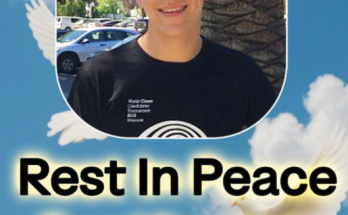
Fragile Truce in the Middle East Shaken
For a few fleeting weeks, the guns fell silent over Gaza. After years of relentless conflict, civilians on both sides dared to exhale, believing that perhaps this time, the ceasefire might hold. But the stillness was deceptive. Beneath the fragile surface of peace, old tensions simmered, and it didn’t take long for the cracks to appear. What began as a cautiously celebrated truce is now on the brink of collapse — shaken by renewed violence, political mistrust, and humanitarian despair.
A Pause, Not a Peace
The truce agreement, brokered in early October 2025 by U.S. and regional mediators, was meant to halt large-scale fighting between Israel and Hamas. It called for a stop to military strikes, the gradual exchange of prisoners, and the opening of Gaza’s border crossings to allow humanitarian aid to flow freely. For war-weary civilians, it was a rare glimpse of hope — a chance to rebuild their shattered homes, to bury their dead in peace, and to send children back to school without fear of air-raid sirens.
But this fragile balance depended on trust, and trust has always been in short supply. Both sides accused the other of insincerity almost immediately. Israel claimed Hamas was rearming under the cover of the ceasefire; Hamas accused Israel of maintaining blockades and delaying aid shipments. Within two weeks, the optimism that briefly touched Gaza’s ruins began to fade.
Early Signs of Trouble
The first major test of the truce came when an Israeli patrol near the Gaza border was reportedly attacked, killing two soldiers. Israel responded with airstrikes that, according to Gaza officials, killed more than forty civilians. Each side blamed the other for “breaking” the agreement. Hamas said it had nothing to do with the border attack; Israel insisted its retaliation was justified.
That exchange was enough to shake confidence in the entire deal. The Gaza media office later accused Israel of violating the ceasefire more than forty times, resulting in dozens of deaths. On the Israeli side, rocket alerts resumed in southern towns, though none caused significant damage. It was clear to everyone: the truce was hanging by a thread.
Diplomatic Scramble
Realizing how quickly the situation could unravel, international mediators rushed to intervene. American envoys arrived in Tel Aviv and Cairo to pressure both sides to honor their commitments. Egypt opened new rounds of talks with Hamas leaders, while Qatar tried to mediate communications between Jerusalem and Gaza.
Washington described the ceasefire as “shaken but not broken.” Yet even U.S. officials privately admitted that the lack of an enforcement mechanism made it fragile. Without neutral monitors on the ground, every skirmish became a matter of interpretation — and every interpretation carried the risk of escalation.
Life in Limbo
In Gaza, the humanitarian situation remains dire. Although aid trucks were promised, only a fraction has entered. Hospitals still lack medicine, clean water remains scarce, and thousands of families live among ruins. “People are losing faith,” said one aid worker. “They thought this truce would finally mean food, water, electricity. But nothing really changes.”
For ordinary Palestinians, each rumor of renewed fighting sparks panic. Markets empty out in hours, as families stockpile bread and fuel. Children flinch at loud noises, afraid the bombs will return. “It’s not peace,” said a Gaza mother of three. “It’s just a break between wars.”
Across the border, Israelis also live with unease. Many support the ceasefire but doubt Hamas will uphold it. Some fear that the lull is only being used by militants to regroup. The government, under pressure from hard-liners, faces the impossible task of maintaining security while allowing humanitarian relief. Every decision risks backlash from one side or the other.
The Deeper Roots of Fragility
The truth is that this truce was fragile from the start because it did not address the deeper causes of the conflict. Neither side’s ultimate goals have changed. Israel still demands the disarmament of Hamas and security guarantees; Hamas continues to reject Israel’s occupation and blockade of Gaza. The ceasefire dealt with symptoms, not the disease.
Another reason for fragility lies in internal politics. In both Israel and Gaza, factions exist that see compromise as weakness. A single rocket fired by a splinter group or a single strike gone wrong can drag both sides back into full-scale war. The leadership may talk about restraint, but extremists thrive in chaos — and chaos is always close at hand.
Externally, regional powers like Iran, Egypt, and Qatar each have their own agendas. Their support for the truce is driven less by humanitarian concern and more by political calculation. If the balance of power shifts, so might their willingness to maintain the peace.
The Human Cost
Behind the political headlines are millions of lives suspended between hope and despair. In Gaza, more than two million people have endured years of blockade and bombardment. The infrastructure is crippled — schools flattened, hospitals running on generators, entire neighborhoods reduced to dust. In Israel, families near the border live under constant anxiety, rushing to shelters at every alert.
Each side buries its dead and blames the other, perpetuating a cycle of pain that no truce can easily break. As one father in Gaza said, standing before the ruins of his home: “They talk about ceasefire, but the sky never stays quiet for long.”
Can the Truce Be Saved?
Analysts believe that only firm international pressure can keep the ceasefire alive. The U.S., Egypt, and Qatar have been urged to deploy neutral monitors and push for tangible progress on aid delivery. The more civilians see improvements in daily life — food, medicine, jobs — the more incentive both sides have to maintain calm.
Transparency is crucial. Each alleged violation must be verified quickly to prevent misinformation from igniting fresh hostilities. Diplomats stress that communication channels between Israel and Hamas, however limited, must remain open. Silence, in this conflict, is dangerous.
Some propose linking aid and reconstruction funding to continued adherence to the truce. If either side breaks it, the funds freeze. Others suggest a phased plan — first humanitarian stabilization, then political dialogue, then longer-term peace talks involving all regional actors. It’s ambitious, but without ambition, there can be no real change.
The Clock Is Ticking
Every day the ceasefire holds is a small victory, but time is running out. Gaza’s humanitarian system teeters on collapse; Israel’s patience with sporadic rocket fire is wearing thin. The U.S. wants to prevent another regional war, yet its influence is limited.
If the truce fails completely, the consequences could ripple far beyond Gaza and Israel. Lebanon’s Hezbollah, Iran’s Revolutionary Guard, and other militant groups could seize the opportunity to ignite new fronts. Global markets — especially for energy — would feel the shock immediately. The entire Middle East could slide back toward chaos.
A Fragile Hope
And yet, amid the rubble and politics, hope persists. For the mother who can finally send her children to school without fear. For the farmer who can return to his land. For the young couple dreaming of a future not defined by rockets and checkpoints. These small hopes are the true test of the truce’s value.
The challenge is immense: to turn a temporary pause into lasting peace. History offers little comfort — so many truces before have collapsed under the weight of hatred and fear. But perhaps, this time, the world will not look away so quickly.
For now, the Middle East stands at a crossroads. On one path lies the chance to rebuild; on the other, another descent into fire and ruin. The choice belongs not just to leaders and diplomats, but to every person who believes that even the most fragile peace is worth protecting.

